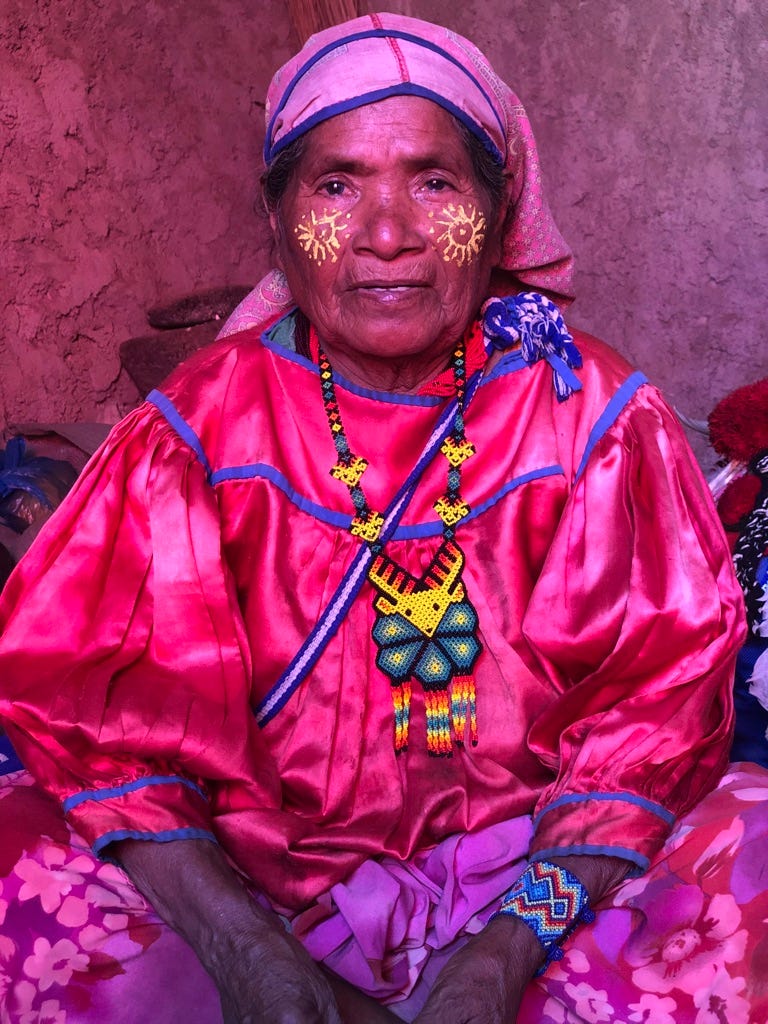Dear devotees,
Our environment is always communicating with us in a language that defies our human-centric worldview. This week’s story focuses on the language of Corn as understood through the Wixárika peoples. Scroll down to read.
🗞️ In Climate News
🇫🇷 Free public transport in Montpellier, France, has led to 20% more journeys
🦜 Bird populations declining at an Amazon park in Ecuador & beyond
🇨🇦 Canada oil sands air pollution 20-64 times worse than industry says: Study
🇳🇬 ‘Weather whiplash’ cycles of floods & droughts imperil Nigerian farming
🇮🇩 NZ funding helps Indigenous farmers in Indonesia protect forests, boost incomes
🔥 Canadian wildfires trigger air quality alerts across 4 U.S. states
🇰🇪 Building Collapses in Nairobi Amidst Heavy Rains, Injuring Several
🇳🇱 New Dutch coalition aims to reintroduce 80mph limit in cull of climate goals
🇮🇩 Latest palm oil deforester in Indonesia may also be operating illegally
📈 Cool Trends
☕️ Empowering community-centered shade coffee agroforestry, while protecting rare and migrating birds
🎽 Sustainable clothing dyes by recreating the DNA of natural colours
♾️ eco-story
The Poetic Language of Corn
My interest in learning and collaborating with indigenous communities in Mexico came from personal experiences as a migrant woman of indigenous heritage.
I am a third-generation Oaxaqueña living in the United States with ties to Mexico City, Mazatlán, Tijuana and most recently, Tepic. My family from both paternal and maternal sides come from a long history of circular migration, moving from one place to another and returning to the original homelands. On my paternal side of the family, my grandfather is from San Juan Sayultepec, a pueblo in Nochixtlán District in the southeast of the Mixteca region of Mexico. On my maternal side, my grandmother, as a young teenage girl, came from the Valle of Oaxaca to work in the field of Mochis, Sinaloa. Due to traumatic and painful disconnection, my mother never met my grandmother and my maternal lineage is still in the process of healing, but through my academic studies and research in anthropology, I have been able to study in Mexico to connect with local communities and indirectly connect with my cultural heritage.
In 2011, I was invited to participate in a gathering with native communities in Tequepexpán, Nayarit. In this gathering, I met Wixárika women and I was invited to visit their community of Las Piedras in Compostela, which led me to visit the Wixárika community of Taimarita and later Y+rata, on the outskirts of Tepic in Nayarit. Every year, I returned to the community to learn with other mothers and their children. By then, my daughter Ixchel was born, and I brought her with me for every field trip. I was a student of Culture and Performance at the Department of World Arts and Culture/Dance at UCLA, working in their PhD program. Through my research I shared most of my time with other mothers, young Wixárika and caregivers in the family. In many of my interactions with the community, I was taught how to be a “good mother” by very young Wixárika girls, which initially felt uncomfortable, I didn’t believe I could learn from younger, inexperienced girls about motherhood, but I was wrong as the best lessons about Wixárika motherhood came from young girls. It was my very first ethnographic lesson: to learn and not impose my ideas. With time, I made kinship ties with the Y+rata community and began to learn about the Wixárika connection with the so-called natural world. It was then that my research evolved to a multi-species approach as I learned from more-than-humans in a meaningful, reciprocal and sustainable way.
🌏 The Culture Column
📺 What we’re watching: The Earthing Movie
📸 Profile of the week: @niatero
📖 What we’re reading: The Salt Path, by Raynor Winn
🤯 Shocking fact we learnt this week: Herd of 170 bison could help store CO2 equivalent of 43,000 cars



